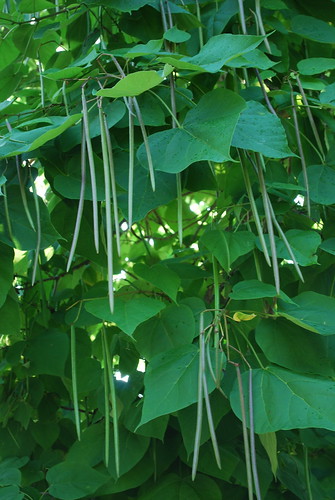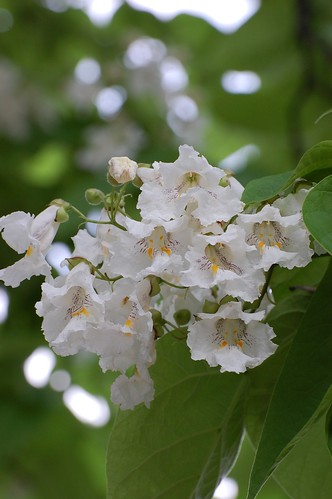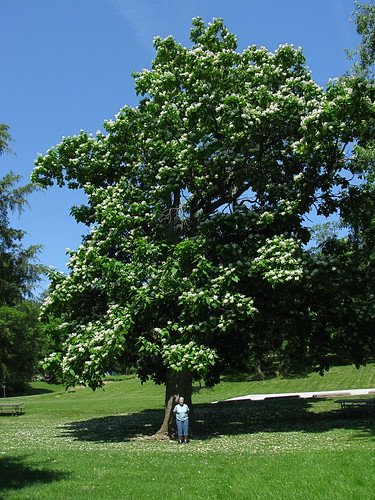Indian Bean Tree – Root and Branch Review
Some trees are named to confuse. The Indian Bean Tree is not from India and it doesn’t grow beans. As a native of north America it is named for a North American native Indian tribe. The seeds are produced in long bean like pods.
Key Features of the Indian Bean Tree
- Latin name – Catalpa bignonioides other common names Catalpa, Cigar tree or Catawba
- Height – up to 60 feet
- Type of tree – Deciduous
- Leaves – Bright green heart-shaped leaves taper to a sharp point.
- Flowers – Trumpet shaped 2″ long white and yellow flowers in panicles
- Fruit – Pendulous and numerous seed pods
- Bark – Orange to pink-brown and scaly
- Family – Bignoniaceae
Origins and Distribution of the Indian Bean Tree
- Originally found in the south eastern parts of North America.
- Now grown ornamentally in America and Britain.
Uses and Attributes of the Indian Bean Tree
- The attractive and exotic appearance has made the Indian Bean a popular tree in parks and public gardens.
- The wood is hard and brittle and not particularly useful.
Gardeners Tips for the Indian Bean Tree
- In the UK and colder areas the beans tend not to ripen.
- The tree can be reproduced quite easily using cuttings.
- Good for pollarding. The shorter ‘Nana’ variety is a good bet for smaller gardens.
Other types of Indian Bean Tree
- There is a small family of Catalpas with two species Catalpa bignonioides and Catalpa speciosa.
- Both species are grown as ornamental trees for their showy leaves and flowers and attractive shape.
Indian Bean Tree comments from elsewhere
- ‘Grown for its large, floppy leaves up to 25cm long and 15cm wide. They open later than most, but make a fantastic show, and the weight has been known to snap off branches on mature trees. There’s a prolific show of midsummer white flowers, followed by thin, green, bean-like pods.’ read more from BBC
Credits
Indian Bean Tree by William & Mary Law Library CC BY-NC-ND 2.0
catalpa_blossom by Tom Gill (lapstrake) CC BY-NC-ND 2.0
Bean tree – Trompetenbaum ( Catalpa ) by Maggi_94 CC BY-NC-SA 2.0
IMG_7745 Large Catalpa Tree in Full Bloom (Catalpa speciosa) by carlfbagge CC BY-NC-ND 2.0



